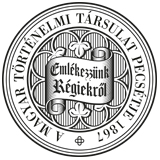Századok – 1995
Tanulmányok - Kristó Gyula: A honfoglaló magyarok életmódjáról I/3
62 KRISTÓ GYULA horses and went from one pasture to another, though the circumstances were growing increasingly worse for that. Sooner or later, the less well-to-do layer of the freemen became subjugated, mostly by the end of the 12th century, while the wealthier of them went over to the new order. In the hierarchy of servants the former came to the top and became horsemen serving their landlords, while the latter got into the ranks of the ruling elite and became servientes of the king in the 13th century. Hungarian feudalism, still having a nomadic and barbarian tint in the 11th and 12th centuries, started to be more and more like the that in Western Europe from the early 13th century. To sum up, the survey proves that the conquering Magyars were neither settled nor seminomadic people but wandering nomads dealing mostly with stock-breeding and going from pasture to pasture with their animals, though they also knew something about farming. This statement contradicts the results of Hungarian historiography in the last few decades reviewed in the first chapter of the paper as an introduction. The results the author has arrived at on the basis of the written sources need naturally to be confronted with the statements of other branches of scholarship.
